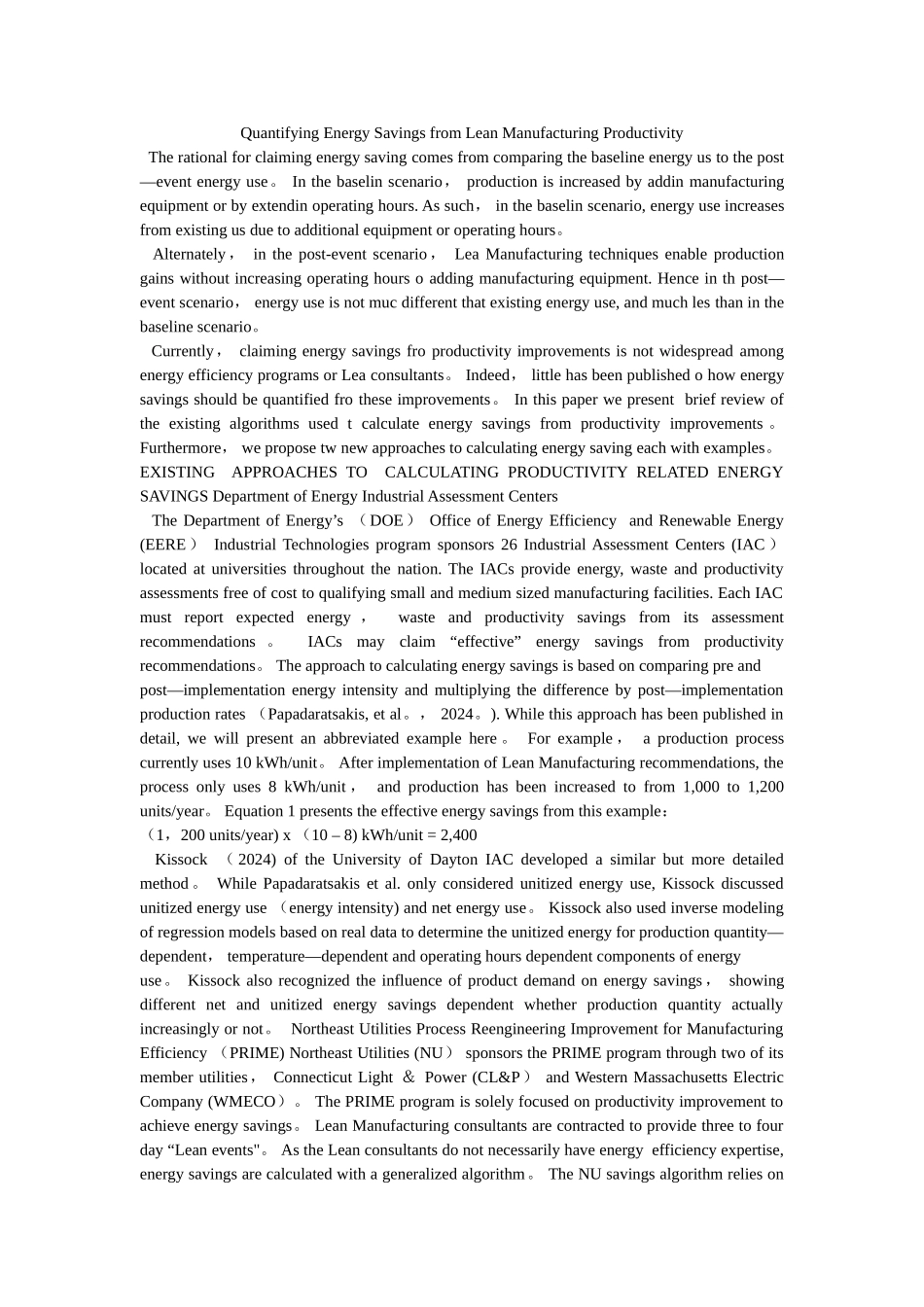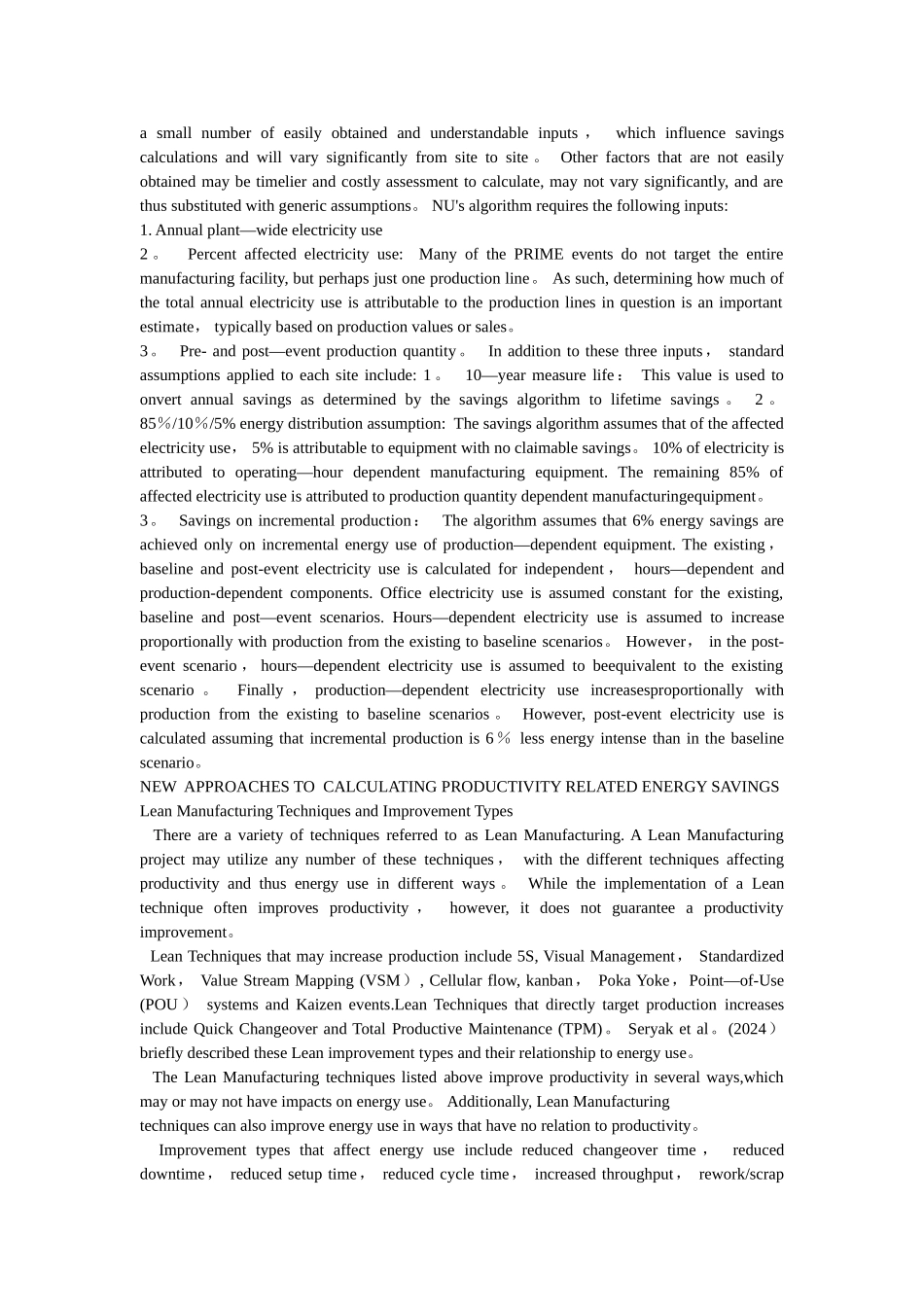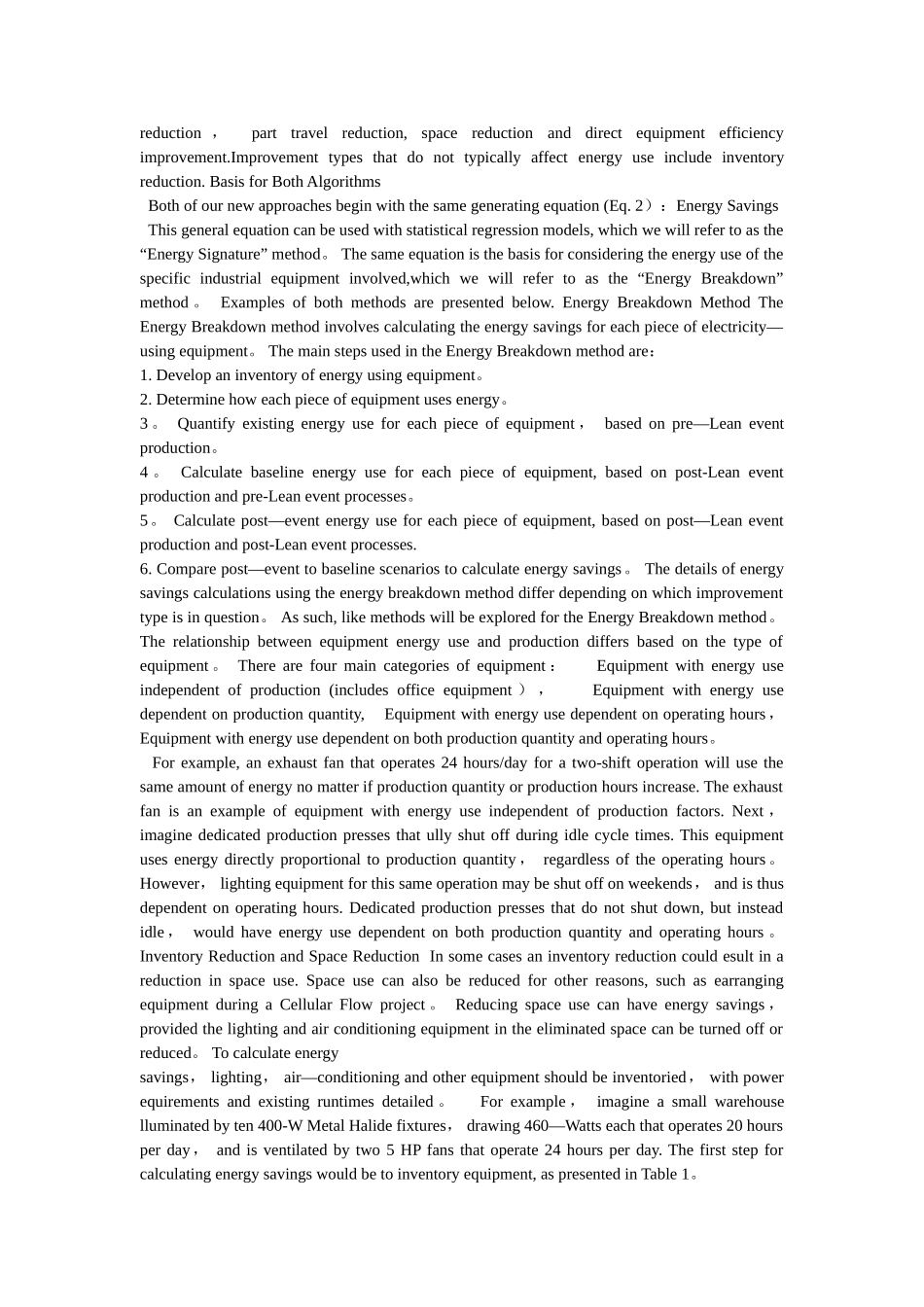Quantifying Energy Savings from Lean Manufacturing Productivity The rational for claiming energy saving comes from comparing the baseline energy us to the post—event energy use。 In the baselin scenario, production is increased by addin manufacturing equipment or by extendin operating hours. As such, in the baselin scenario, energy use increases from existing us due to additional equipment or operating hours。 Alternately , in the post-event scenario , Lea Manufacturing techniques enable production gains without increasing operating hours o adding manufacturing equipment. Hence in th post—event scenario, energy use is not muc different that existing energy use, and much les than in the baseline scenario。 Currently, claiming energy savings fro productivity improvements is not widespread among energy efficiency programs or Lea consultants。 Indeed, little has been published o how energy savings should be quantified fro these improvements。 In this paper we present brief review of the existing algorithms used t calculate energy savings from productivity improvements 。 Furthermore, we propose tw new approaches to calculating energy saving each with examples。 EXISTING APPROACHES TO CALCULATING PRODUCTIVITY RELATED ENERGY SAVINGS Department of Energy Industrial Assessment Centers The Department of Energy’s (DOE) Office of Energy Efficiency and Renewable Energy (EERE ) Industrial Technologies program sponsors 26 Industrial Assessment Centers (IAC ) located at universities throughout the nation. The IACs provide energy, waste and productivity assessments free of cost to qualifying small and medium sized manufacturing facilities. Each IAC must report expected energy , waste and productivity savings from its asses...


